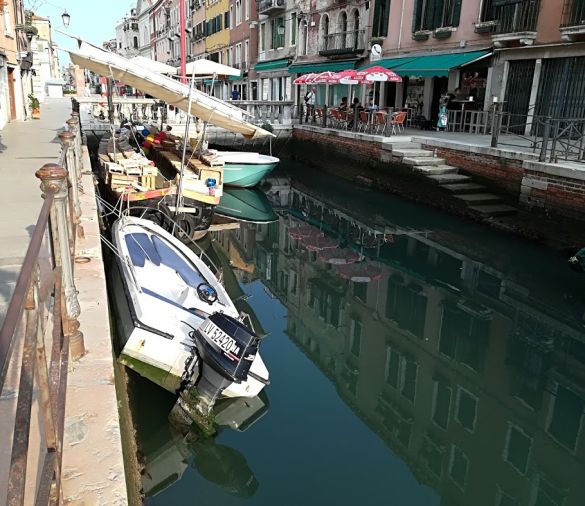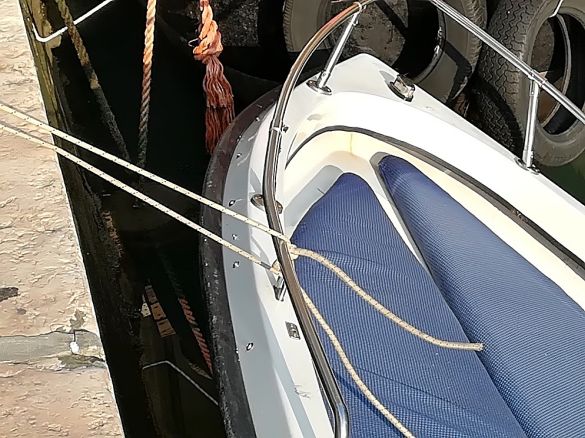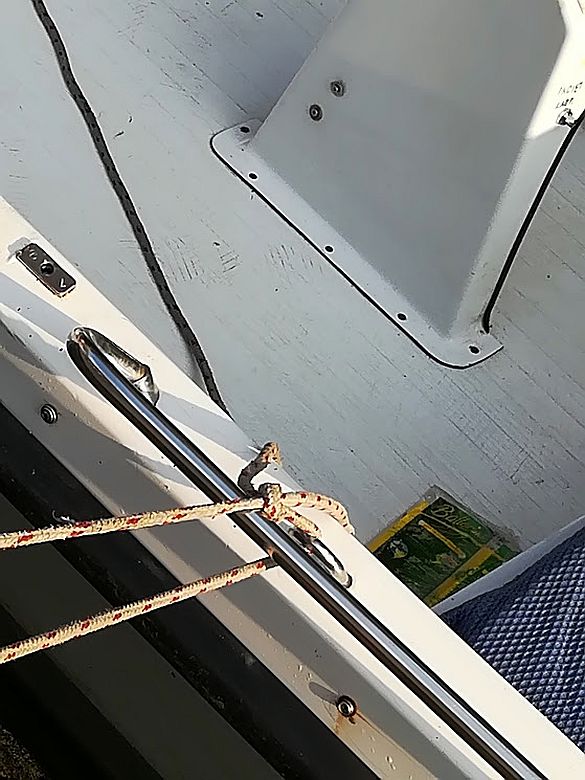The fireworks on Saturday night for the annual festa of the Redentore were in the top five I’ve ever seen in my life — beyond spectacular — full of new designs and gorgeous combinations, an exhibition that ran almost 15 minutes over the usual 30. It was thrilling.
There was a thunderstorm at 9:30 for a while that made it unclear whether the show would go on at 11:30 as usual, or if all those little bombs would still be combustible if lit in front of what might have been only a scattering of drenched, diehard boats. Also, restaurants all along via Garibaldi were forced to implement their disaster procedure, staff racing to clear tables and carry them inside (the customers were figuring out their own strategies, some of which were “Well hey, let’s just keep on singing in the rain”).
But the rain stopped, the people took heart, and the pyrotecnics proceeded.
Sunday morning dawned bright and shiny, and as we strolled we came upon one of the most eloquent demonstrations I’ve ever seen of what taking your boat to the Redentore means. It’s the aftermath that reveals the truth about you and your boat.

Any seadog with a shred of foresight — let’s even posit that he/she doesn’t drink — might have considered consulting the updated daily forecast of the tides (height and depth of) so usefully provided by the Tide Center of the Comune of Venezia. Italian language skills not required. I appreciate that after a festive evening, which might have begun at 3:00 PM, one’s thoughts on caring for one’s boat might turn more naturally to preventing its floating away than toward its dropping a few feet straight down.
This owner was extremely lucky in one way: At this moment, the tide had already begun to rise, which meant that although the boat was still hanged, it wasn’t drowned as well. Because it isn’t the hardest thing in the world for the rising water to begin to go over the gunwale of the boat and peacefully and efficiently fill it up. I have seen this and it is not a happy sight; you can bail out the boat, but the effect of salt water on your submerged engine is a catastrophe. Those horses will never run again.




3 Comments
I have been following your blog for years even though I have never commented. Every post evokes memories from the trip to Venice back in 2016.
What a very happy note for me to get — thank you so much for writing to me!
Thank you so much, Erla, for this latest account of Selvatico and his achievements. We have often wondered about him as we stroll through his campiello. In September, we will visit Venice probably for our last (and 35th!) time, owing to age and declining prosperity. Your blogs are so wonderful as a means of disseminating little-known historical stories about the Venice we love so much, and even more about daily life there today, of which we as visitors catch only a glimpse.
We give many presentations to U3A (University of the Third Age) in Australia, often about Venice and Italy, and stories from your eagerly awaited blogs (always acknowledged) have given us those extra snippets of the Venetian tale to add to our talks. Our huge library of Veneziana at home, and your delightful insights into life there will have to suffice in place of future visits. Thank you so much!
John Flint